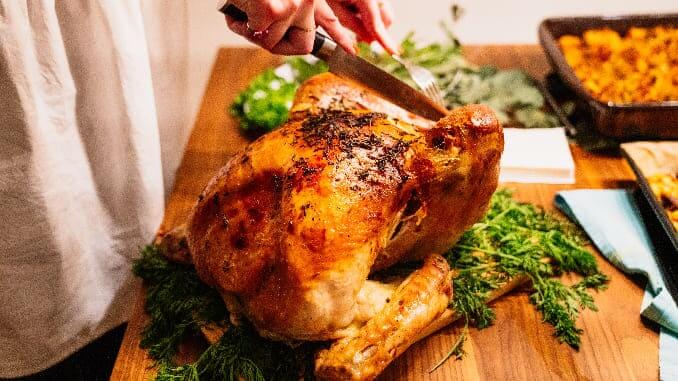The Cost of Thanksgiving Dinner This Year Is Ridiculous
Photo by Claudio Schwarz/Unsplash
Anyone who’s been to a grocery store in the last several months has witnessed a steep rise in food costs. The prices of basic, essential ingredients like milk, eggs and bread have skyrocketed, leaving many Americans, some of whom struggled during the pandemic, forced to enact stricter food budgets for their families.
Of course, supply chain issues related to covid and the war on Ukraine have played a significant role in this startling level of inflation, but as the New York Times recently reported, some companies have viewed these already-rising costs as the perfect excuse to overcharge customers, “even after their own inflation-related costs have been covered.” It’s not surprising that corporate leaders have decided to price-gouge already struggling consumers, many of whom are suffering from what ought to be considered criminally stagnant wages, but it’s still disheartening. And as the holiday season approaches, the cost of what should be accessible luxuries, like a typical American Thanksgiving dinner, is steadily on the rise.
According to the American Farm Bureau Federation (AFBF), the average price of a Thanksgiving dinner for ten people has skyrocketed 20% from last year—the steepest year-over-year increase in price since the AFBF began conducting its annual Thanksgiving survey. The average price for Thanksgiving dinner now comes in at $64.05, a stark contrast from the 2021 cost of $53.31 and the 2020 cost of $46.90.
The most significant factor in this price jump is the cost of the turkey itself, which is up 21% from last year. However, there’s good news for shoppers who haven’t yet purchased their turkeys: Grocery stores tend to drop their prices right before the holiday, so now is the perfect time to snag your bird if you haven’t yet done so. Other ingredients that the AFBF tracked include sweet potatoes, frozen pie crusts, fresh cranberries, stuffing mix and whole milk. It’s also important to remember that these average costs vary significantly depending on where you’re doing your shopping. Generally, shoppers in the South are going to pay less than those in the Northeast, the Midwest and the West, which is looking at an average cost of $71.37.
-

-

-

-

-

-

-

-

-

-

-

-

-

-

-

-

-

-

-

-

-

-

-

-

-

-

-

-

-

-

-

-

-

-

-

-

-

-

-

-








































